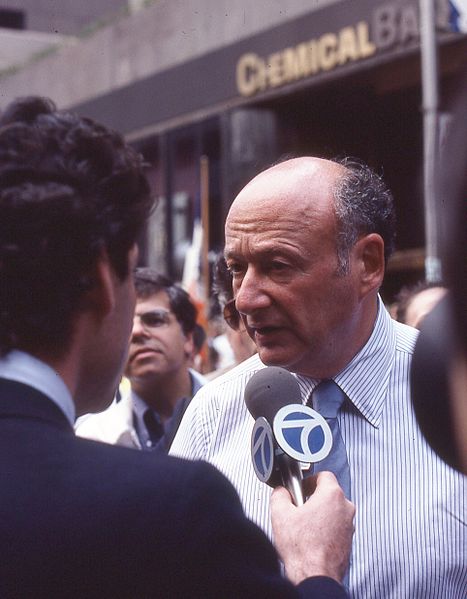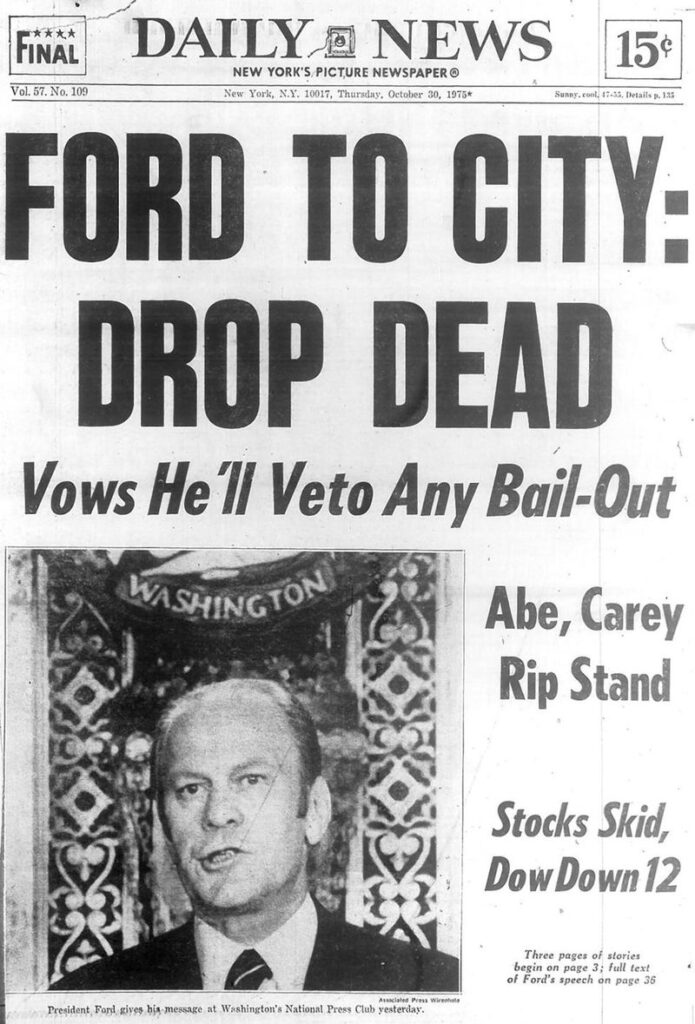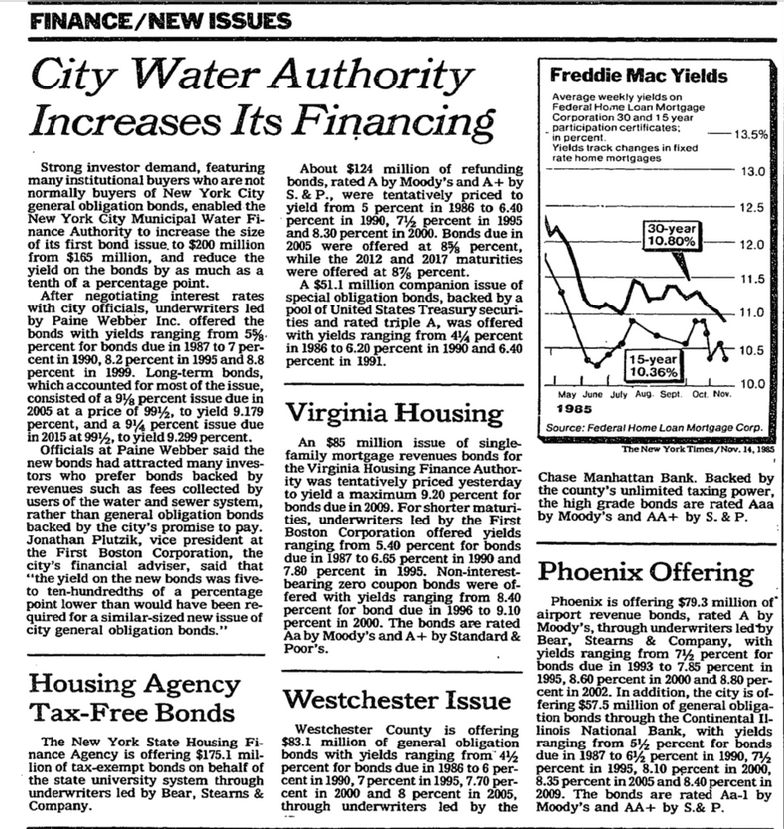The New York City Water Board
Until the 1970s, the city’s primary concern was meeting the city’s demand for water. However, capital investment in the water system collapsed during the fiscal crisis of 1975, and then again in the mid 1980s due in part to the city’s administrative changes with Mayor Ed Koch and a drop in federal and state funding towards the city’s budget. The drinking water system was falling into disrepair due to the aging pipes. At the same time, the EPA was beginning oversight on drinking water conditions, which were difficult to meet. To relieve pressure on the city’s budget, Koch created two semi-autonomous city agencies, the New York City Municipal Water Finance Authority and New York City Water Board. The Water Finance Authority sells bonds to pay for water projects, and the New York City Water Board sets water and sewer rates to the amount needed to pay back the bonds.

“The New York City Municipal Water Finance Authority (“NYW”) is a public benefit corporation created in 1985 pursuant to the New York City Municipal Water Finance Authority Act. NYW’s purpose is to finance the capital needs of the water and sewer system of the City of New York (the “System”) which is operated by the New York City Department of Environmental Protection.”
— New York City Municipal Water Finance Authority Mission Statement. Source: NYC Municipal Water Authority website. Link.
“The New York City Water Board’s mission is to establish rates for and distribute the collected revenues of the Water and Sewer System (the “System”) of the City of New York, proactively considering the optimal level to achieve efficient financing of the System’s infrastructure and sustainable provision of high-quality service at a fair price to our customers. In fulfilling its mission, the Board will actively take into account drivers affecting the financial condition of the System, such as the operating and capital needs of the System, protection of the watershed, regulatory requirements and other relevant factors.”
— New York City Water Board Mission Statement. Source: NYC Water Board website. Link.
“New York City in the late 1970s was plagued by severe economic and political troubles unlike any the city’s inhabitants had experienced before. Faced with economic stagnation, industrial decline, and the looming threat of bankruptcy, the City of New York responded by laying off city workers and cutting municipal services such as sanitation and after-school programs. The city’s already high unemployment rates got higher, and many middle class families — more than 820,000 people — fled to the suburbs in a movement known as white flight, desperate for jobs. Others, angry at the cut in social services and feeling neglected by their government, turned to violence; crime rates rapidly increased as drugs, vandalism and theft became the norm.”
— From “NYC in Chaos” from PBS. Link.
By Fall 1975, New York City was in a state of severe financial crisis, increasingly accruing debt without a clear path to repayment. In October 1975, the City’s debt would be due, threatening bankruptcy.

“By midday that Friday, Oct. 17, 1975, [Mayor Abraham D.] Beame had signed a formal petition attesting to municipal default. The police commandeered squad cars, poised to serve legal papers on banks that were the city’s leading creditors. A court order was pending to preserve the city government’s assets, including cash and durable goods, like garbage trucks. A judge with whom the Beames regularly played pinochle was enlisted to order Comptroller Harrison J. Goldin to pay the salaries of city workers before paying the principal and interest due that afternoon on municipal debt.”
— from “When New York Teetered on the Brink of Bankruptcy” by Sam Roberts for the NY Times, published July 25, 2013. Link.
Just a few years after the bankruptcy crisis under Mayor Beame, New York City elected a new mayor, Ed Koch, who would lead the city for the next decade and guide it out of the financial precarity of the 1970s.
“New York was broke, but it wasn’t bankrupt,” [Stephen] Berger [who would become the first director of the Emergency Financial Control Board] recalled. “It was an enterprise that had been badly mismanaged, whose finances were uncontrolled and had no real financial systems and was basically run by a history of pushcart peddlers. However, it had a substantial core of political and business leadership, which saw the long-term danger to short-term solution.”
“Beyond the financial repercussions, bankruptcy, [Richard] Ravitch [whom Gov. Hugh L. Carey had recruited to rescue the state’s overextended Urban Development Corporation said, would have been “a failure of democracy to solve its problems and we didn’t want to fail. But on the other hand, it was the threat of bankruptcy that got everybody to do things that in the beginning of this process they swore they wouldn’t do.”
— From “When New York Teetered on the Brink of Bankruptcy” by Sam Roberts for the NY Times, published July 25, 2013. Link.
“City Water Authority Increases Its Financing: Strong investor demand, featuring many institutional buyers who are not normally buyers of New York City general obligation bonds, enabled the New York City Municipal Water Finance Authority to increase the size of its first bond issue to $200 million from $165 million, and reduce the yield on the bonds by as much as a tenth of a percentage point. After negotiating interest rates with city officials, underwriters led by Paine Webber Inc. offered the bonds with yields ranging from 5 5/8 percent for bonds due in 1987 to 7 percent in 1990, 8.2 percent in 1995 and 8.8 percent in 1999.”
— From The New York Times on November 14, 1985. Link.



